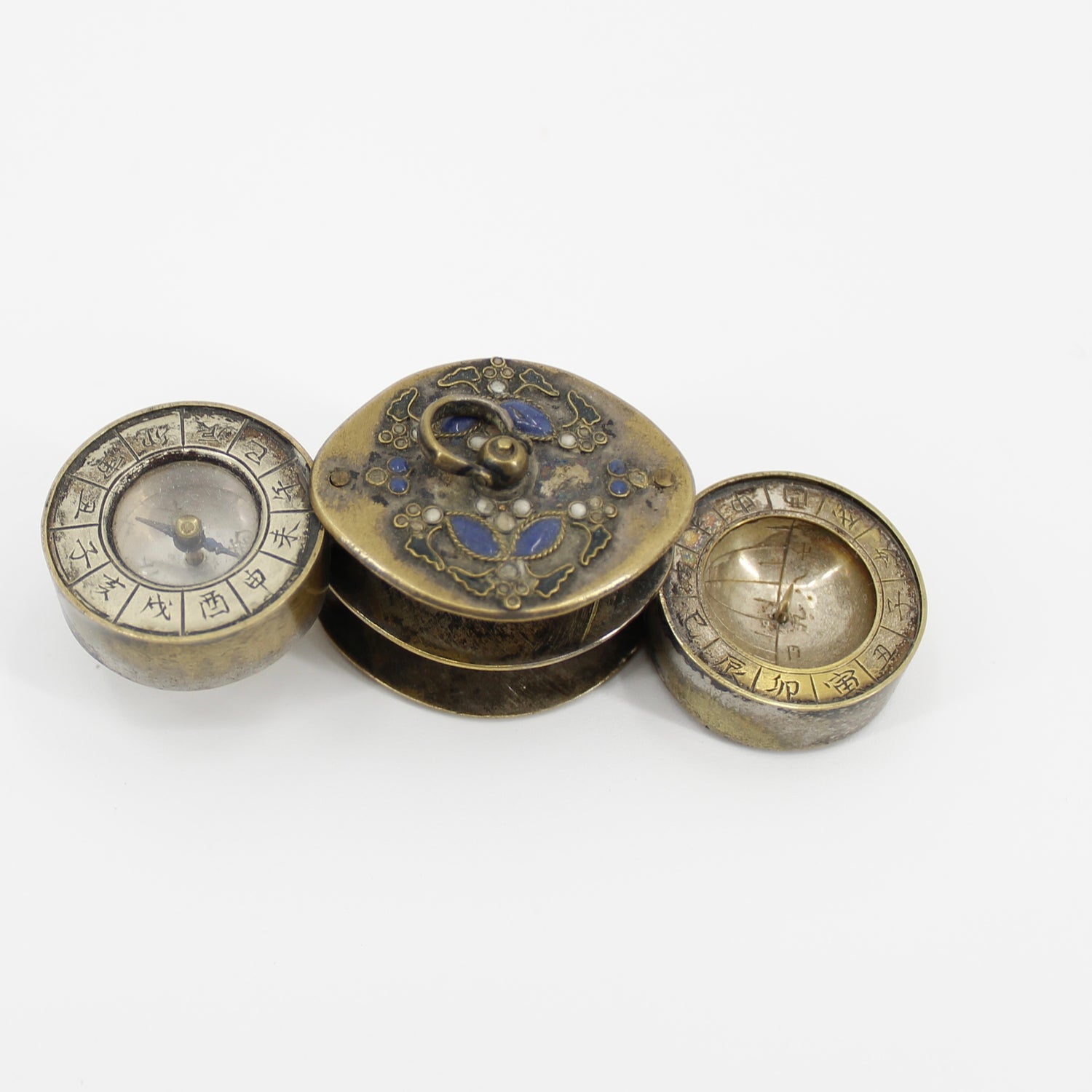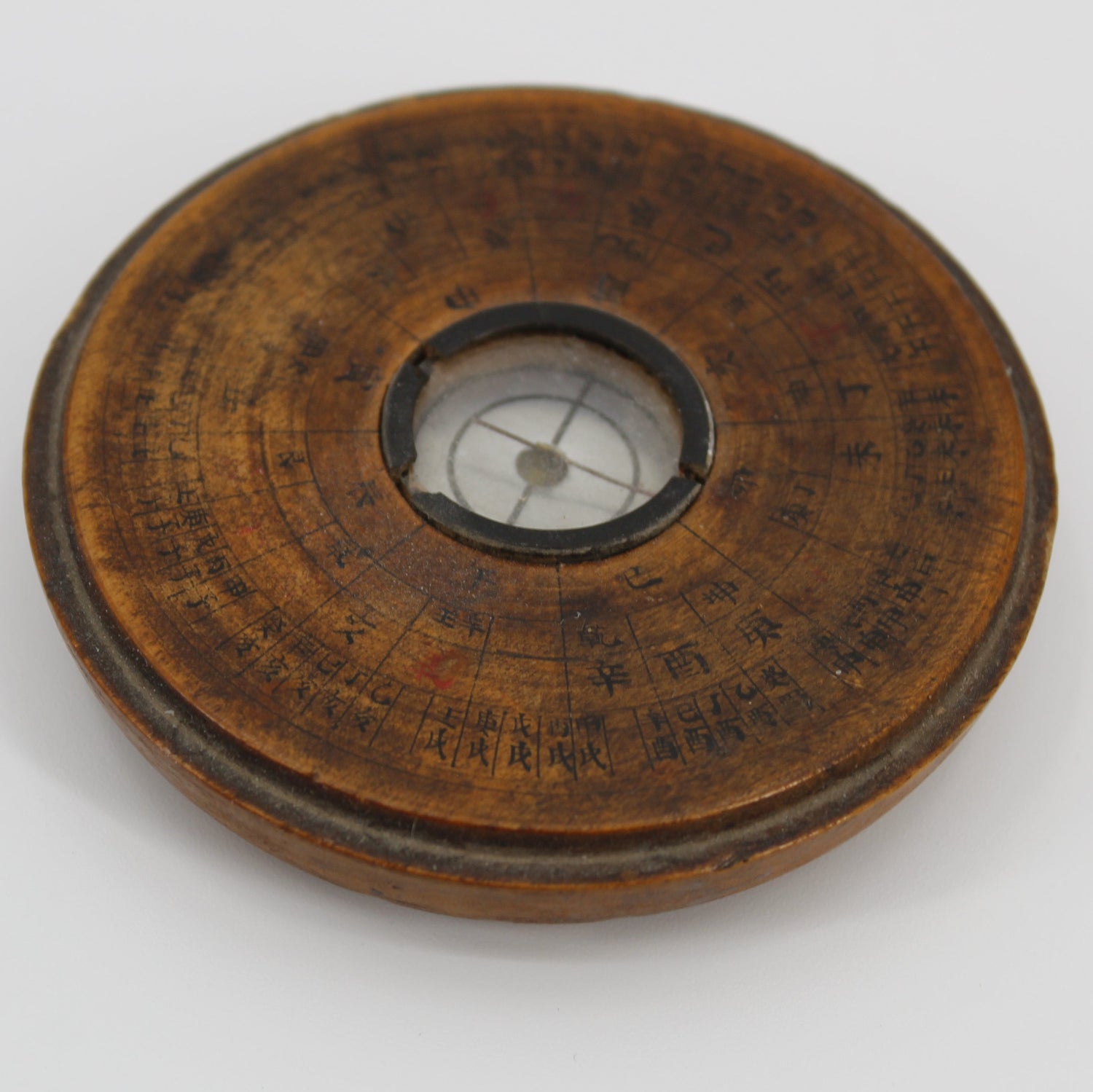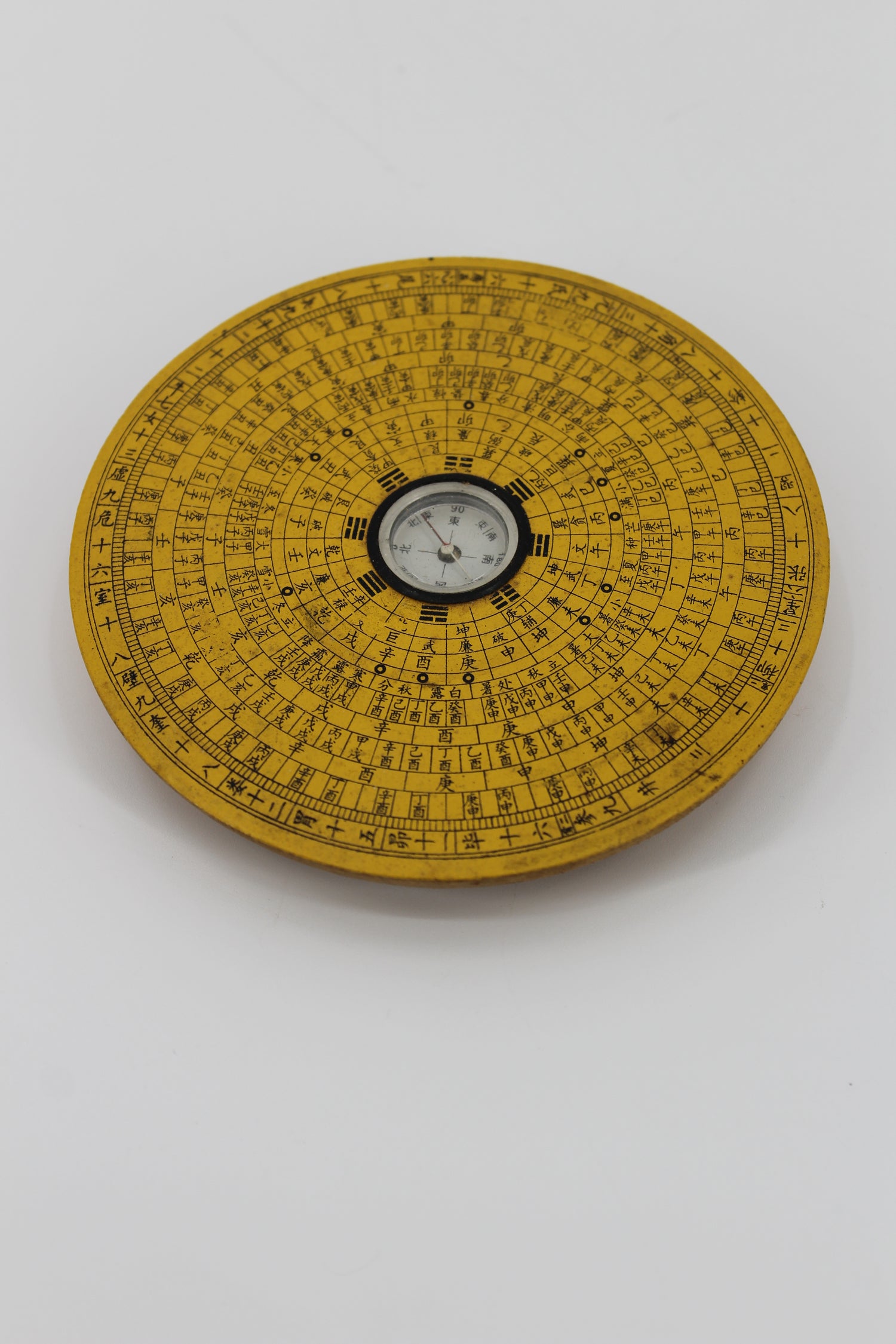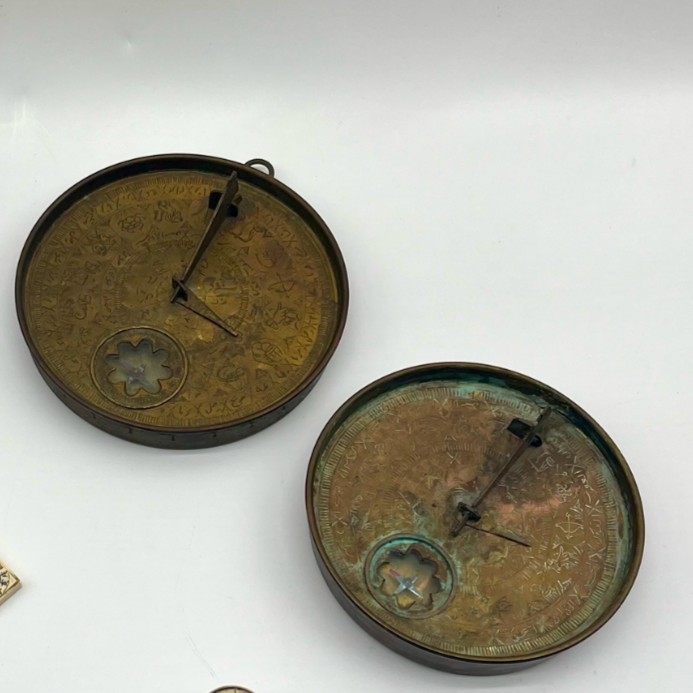Eastern & Arabic Dials
An array of 18th-20th century Eastern & Arabic sundials. Highlighting an interesting trio of Wooden Chinese Diptychs (Type-A & Type-B), a Gold Vermeiled Japanese Saphe Dial, and pairs of Persian Equinoctial Dials, Miniature Ivory Diptychs, & Feng-Shui Mariners Compasses.

Circa 1700's
Gold Vermeil Japanese Saphe Dial
Rare 18th Century Japanese Saphe (Compass & Bowl-dial) Sundial; Comprised of Gold Vermeil, with detailed filigree, and embellished with precious stones. Featuring Jade, Lapis Lazuli, Pearls, & Red Coral; an example of the finest Japanese craftsmanship of the 1700's. Features a blued-needle on jeweled pivot, original glass, & carrying ring to be worn on pocket chain/necklace.

Circa 1770-1900
Chinese Needham Type-A Fruitwood Diptych
An exceptional, multi-functional late 19th century Chinese Type-A folding sundial & compass. Vertical set brass gnomon, functional compass, original glass. Fantastic condition (additional information coming soon).
Featured in the Science Museum Group.

Circa 1800-1910
Chinese Needham Type-A Diptych
Based on the Chinese solar calendar, Jiegi. Lists the 24 solar terms of year from the Great Snow to Xiazhi (summer solstice). Adjustable throughout the year to account seasonal variation. Days were divided into 12 double-hours, or Shi, ranging from Tzu to Hai. Further divisions in this standard are the Ke & Fen (exact calculations of these units have varied throughout dynasties).
Featured in the Adler Planetarium.
Featured in the Science Museum Group.

Circa 1880-1910
Chinese Needham Type-B Diptych
Made for use at 40° latitude (Beijing). Featuring a wooden lunar volvelle and equatorial sun and moon dial. Age of moon; volvelle with pointer; double hours; petalled brass rivet with string gnomon.
Featured in the Adler Planetarium.
Featured in the Science Museum Group.

Circa 1850
Antique Iuopan (Geomancers' Compass)
Antique Chinese wood Geomancer's Feng Shui Compass (luopan), on a carved wooden disk with ink inscriptions. Circa 1850. Used by geomancers for Feng Shui practices; allowing geomancers to give physical directional guidance & analyze the "energy" of locations. Using these, geomancers could choose fortunate orientations for buildings, structures, or objects. Likewise, they were used to detect/change the auspicious as well.

Circa 1940
Vintage Chinese luopan
By taking into account optical Qi, and the balance of Yin and Yang, these were utilized during new construction of personal & communal spaces, determining burial sites, or reorienting ones surroundings in times of adversity.

Ottoman Sundial & Qibla Indicators
Antique 18th-19th century Ottoman Islamic brass Qibla indicator & sundial, of round form, & affix with suspension ring. The face engraved with toponyms in Arabic and zodiac symbols. The sundial component is mounted with the folded triangle - form gnomen and a swiveling pin.
This compass and sundial were used by the Muslim faithful to locate qibla, or sacred direction towards the Ka'aba in Mecca for sholat (prayers). The sundial component was used for determining the time and thus the correct time for sholat.

Miniature Ivory Diptychs
Antique Miniature Ivory Sundials. Ivory items are not for sale. Descriptions from left to right.
Eastern Ivory Diptych: Dated 1776. (Additional Information Coming Soon.)
Chinese Bowl Dial: Small inlaid compass surrounded by the 12 Chinese earthly branches. Polychrome paint with traces of gilding. With original glass, top case, & functioning dial




